When it comes to cultivating a vibrant and lush garden, understanding the specific needs of your plants is paramount. Hostas, renowned for their captivating foliage and ability to thrive in various conditions, pose a common question for gardeners: Do Hostas Like Acidic Soil? Let’s answer Gina Farm accurately through the following article.
Decoding Hostas’ Soil Preferences
Hostas are popular perennial plants known for their attractive foliage and shade tolerance. Understanding their soil preferences is crucial for their successful growth. Here are key considerations for decoding hostas’ soil preferences:
Well-Drained Soil:
Hostas prefer well-drained soil to thrive. Ensure that the soil is not waterlogged, as excess moisture can lead to root rot and other diseases.
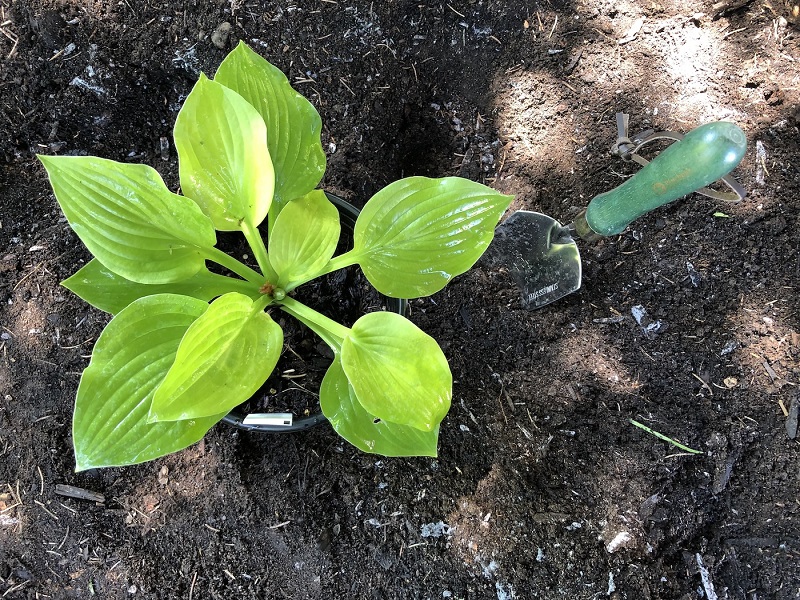
Organic Matter:
Hostas appreciate soil rich in organic matter. Incorporating well-rotted compost or aged manure into the soil enhances its fertility and structure, providing a good environment for hosta roots.
pH Level:
Hostas generally prefer slightly acidic to neutral soil with a pH range between 6.0 and 7.5. Testing the soil pH can help you adjust it if needed, using lime to raise pH or sulfur to lower it.
Moisture Retention:
While hostas dislike waterlogged soil, they also prefer consistent moisture. Mulching around hostas helps retain soil moisture, prevents weeds, and moderates soil temperature.
Loose Texture:
Hostas thrive in loose, well-aerated soil. Heavy or compacted soil can impede root growth and water drainage. Amending the soil with sand or perlite can improve its texture.
Fertilization:
Hostas benefit from regular fertilization. A balanced, slow-release fertilizer applied in spring as new shoots emerge can provide the nutrients they need for the growing season.
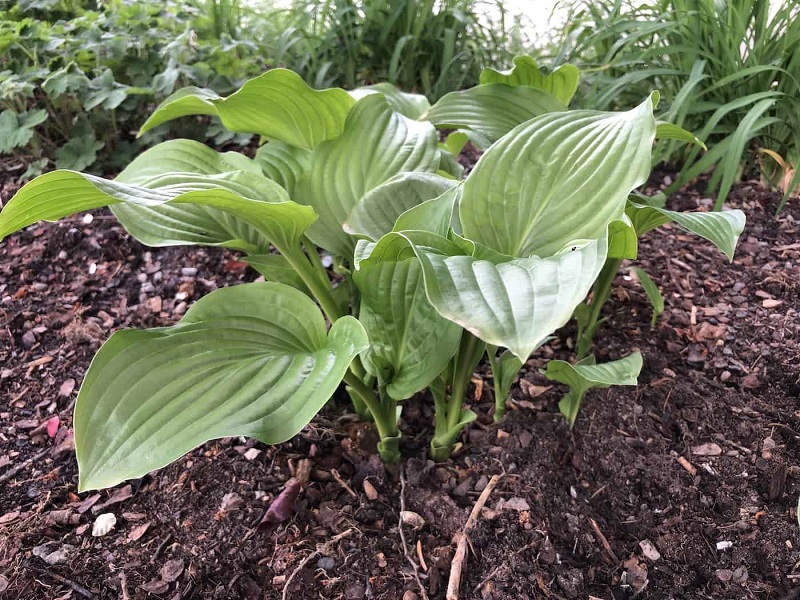
Location and Sun Exposure:
Hostas are often planted in shaded or partially shaded areas. However, the ideal amount of sunlight can vary among different hosta varieties. Some tolerate more sun than others. Understanding the specific requirements of your hosta cultivar is important.
Winter Hardiness:
Consider the hardiness zone of your region when choosing hosta varieties. Different varieties have varying degrees of cold tolerance, and selecting those suitable for your zone will enhance their winter survival.
Soil preferences may vary slightly between different hosta varieties. Always check specific care recommendations for the particular cultivar you have, as they might have unique requirements. Regular monitoring of soil moisture, pH, and overall plant health will help you provide the best conditions for your hostas to flourish.
Do Hostas Like Acidic Soil?
So Do Hostas Like Acidic Soil? The answer is NO (But it depends on each case). Hostas generally prefer slightly acidic to neutral soil conditions. A pH range between 6.0 and 7.5 is considered suitable for most hosta varieties. This means that while they can tolerate slightly acidic conditions, they also grow well in soils that are close to neutral.
If the soil is too acidic, you can consider adding lime to raise the pH. On the other hand, if the soil is too alkaline, you might need to incorporate sulfur to lower the pH. It’s essential to monitor the pH of the soil and make adjustments if necessary to create an optimal growing environment for hostas.
While hostas can adapt to a range of soil conditions, providing them with well-drained soil rich in organic matter is generally recommended for the best growth and health. As with any plant, the specific preferences can vary among different hosta varieties, so it’s a good idea to check the care recommendations for the specific cultivar you have.

How to treat acidic soil to grow Hostas plants?
If you have acidic soil and want to grow hostas, you may need to adjust the pH to make it more suitable for these plants. Hostas generally prefer slightly acidic to neutral soil with a pH range between 6.0 and 7.5. Here are steps to treat acidic soil for hostas:
Test the Soil pH:
Before making any adjustments, test the pH of your soil to determine its current acidity level. Soil test kits are available at garden centers, or you can send a sample to a local agricultural extension service.
Add Lime to Raise pH:
If your soil is too acidic, you can raise the pH by adding lime. Agricultural lime is commonly used for this purpose. Follow the recommended application rates on the lime package based on your soil test results. It’s important to note that lime takes time to react with the soil, so apply it well in advance of planting hostas.
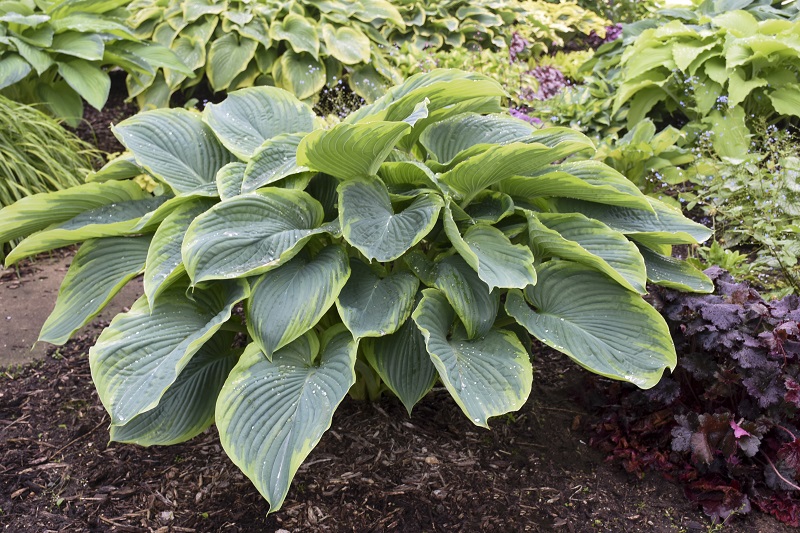
Incorporate Lime into the Soil:
Once you’ve chosen the appropriate type of lime, spread it evenly over the soil surface and incorporate it into the top few inches of soil using a rake or garden fork. Water the area well after application to help the lime start working.
Monitor pH Levels:
Re-test the soil pH periodically to monitor changes. It may take several months for the lime to fully react with the soil and raise the pH. Adjustments may need to be made over time.
Choose Lime Alternatives:
If you prefer not to use traditional agricultural lime, there are alternative products available, such as dolomitic lime or pelletized lime. These products can be easier to handle and may provide a more immediate pH adjustment.
Consider Elemental Sulfur:
Elemental sulfur can be used to lower soil pH if it is too alkaline. However, this process can take longer than raising pH with lime. Follow recommended application rates and incorporate the sulfur into the soil.
Organic Matter Amendment:
Adding organic matter, such as well-rotted compost or aged manure, can also help improve soil structure and fertility. While it won’t directly change the pH, it can enhance the overall health of the soil and benefit hosta growth.
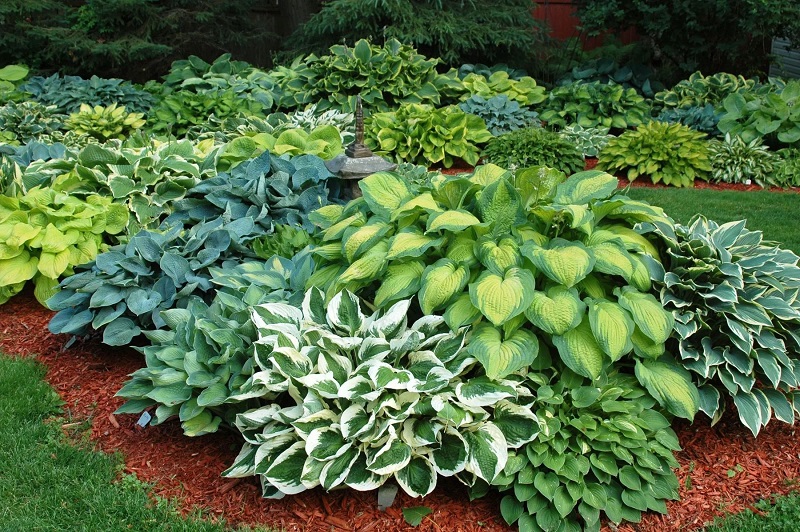
Mulch with Organic Materials:
Mulching with organic materials like compost or well-rotted leaves can contribute to maintaining a more neutral pH over time. As these materials break down, they release nutrients and can help buffer against pH extremes.
Follow the specific recommendations on the lime or sulfur product you choose, and regularly monitor the soil pH to ensure it remains within the desired range for hostas. Adjustments to soil pH are gradual processes, so patience is key when making changes to create an optimal growing environment for your hosta plants.
How to create the most suitable soil environment for Hostas plants?
Creating the most suitable soil environment for hostas involves providing well-drained, organically rich soil with the right pH and texture. Here’s a step-by-step guide to creating an ideal soil environment for hosta plants:
Choose the Right Location:
Hostas typically prefer shade to partial shade, although there are some varieties that can tolerate more sunlight. Select a location in your garden that receives the appropriate amount of sunlight based on the specific requirements of the hosta variety you have.
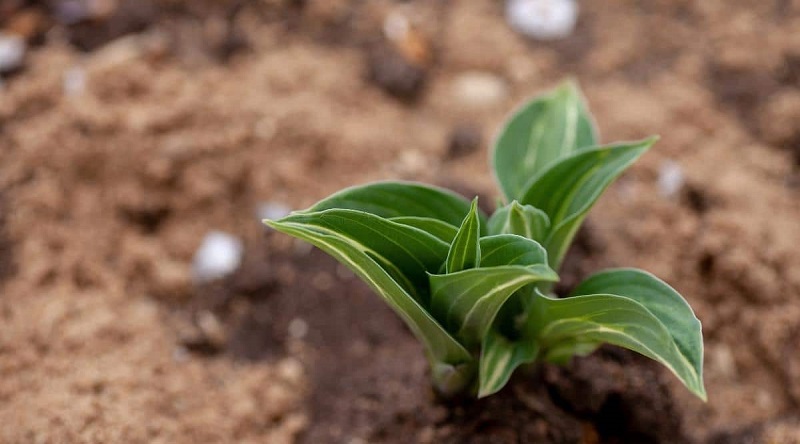
Test Soil pH:
Check the pH of your soil. Hostas generally prefer slightly acidic to neutral soil with a pH range between 6.0 and 7.5. Amend the soil if necessary by adding lime to raise the pH or sulfur to lower it.
Improve Drainage:
Ensure that the soil has good drainage. Hostas do not like waterlogged conditions, which can lead to root rot. If your soil retains water excessively, consider incorporating organic matter and possibly adding sand or perlite to improve drainage.
Add Organic Matter:
Hostas thrive in soil rich in organic matter. Incorporate well-rotted compost, aged manure, or other organic amendments into the soil. This improves fertility, provides essential nutrients, and enhances the soil structure.
Loosen Soil Texture:
Hostas prefer loose, well-aerated soil. Break up compacted soil by tilling or using a garden fork. Adding coarse materials like sand or perlite can further improve soil texture.
Mulch:
Apply a layer of organic mulch around hostas. Mulch helps retain soil moisture, suppresses weeds, and moderates soil temperature. Use materials like shredded bark, straw, or compost, and replenish the mulch as needed.
Fertilize Appropriately:
Hostas benefit from regular fertilization. Apply a balanced, slow-release fertilizer in spring as new shoots emerge. Follow package instructions for application rates, as excessive fertilization can lead to problems.
Watering:
Keep the soil consistently moist but not waterlogged. Hostas generally like regular watering, especially during dry periods. Water deeply to encourage the development of a robust root system.
Monitor for Pests and Diseases:
Regularly inspect your hostas for signs of pests or diseases. Good soil practices, including proper watering and adequate spacing, can help prevent some common issues.

Space Plants Appropriately:
Give hostas enough room to grow. Proper spacing allows for good air circulation, which can help prevent diseases. Follow the recommended spacing for the specific hosta variety you are planting.
By paying attention to these factors, you can create an optimal soil environment for your hosta plants, promoting healthy growth and vibrant foliage. Additionally, remember to consider the specific requirements of the hosta cultivar you have, as preferences may vary among different varieties.
Beyond pH: Additional Tips for Hosta Care
While achieving the ideal pH is crucial, other factors contribute to the overall well-being of hostas. Consider the following tips to ensure your hostas thrive in their environment:
Adequate Watering: Hydration Matters
Hostas appreciate consistent moisture levels. Ensure they receive sufficient water, especially during dry spells, to prevent stress and maintain optimal growth.
Sunlight Considerations: Finding the Sweet Spot
While hostas are renowned for their ability to thrive in shade, they benefit from some filtered sunlight. Striking a balance between shade and sunlight promotes healthier, more robust plants.
Mulching Magic: Protecting and Nourishing
Mulching not only conserves soil moisture but also regulates soil temperature. A layer of organic mulch around your hostas provides a protective barrier, keeping the soil consistently cool and moist.

In Conclusion: Cultivating Hostas with Precision
The key to cultivating thriving hostas lies in precision and understanding the intricacies of soil pH. By focusing on the slightly acidic to neutral pH range, incorporating organic matter, and following practical care tips, you pave the way for a garden adorned with lush, healthy hostas.
Gina Farm hopes that the above article has helped you accurately answer the question “Do Hostas Like Acidic Soil?” ok then. Thank you for following our articles.